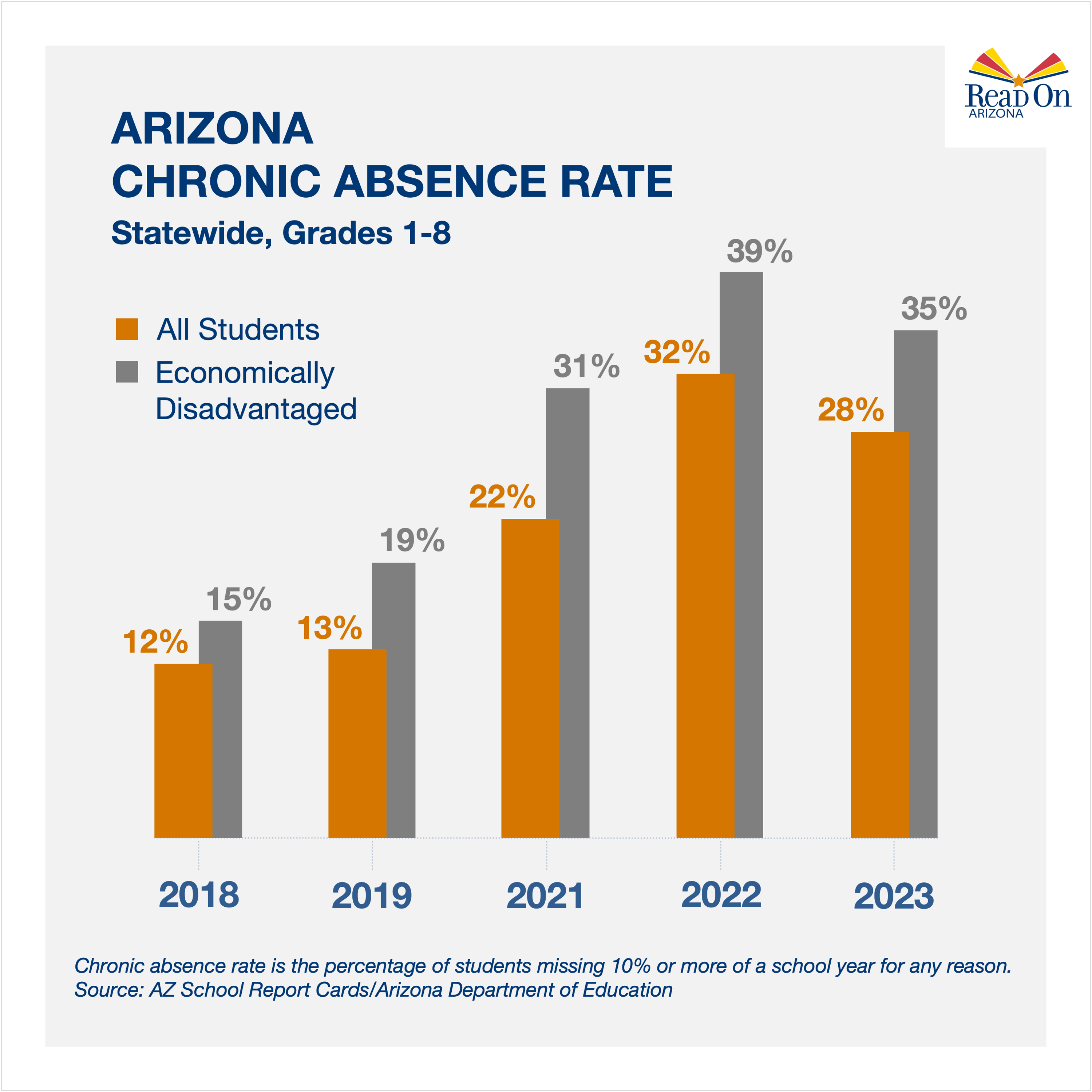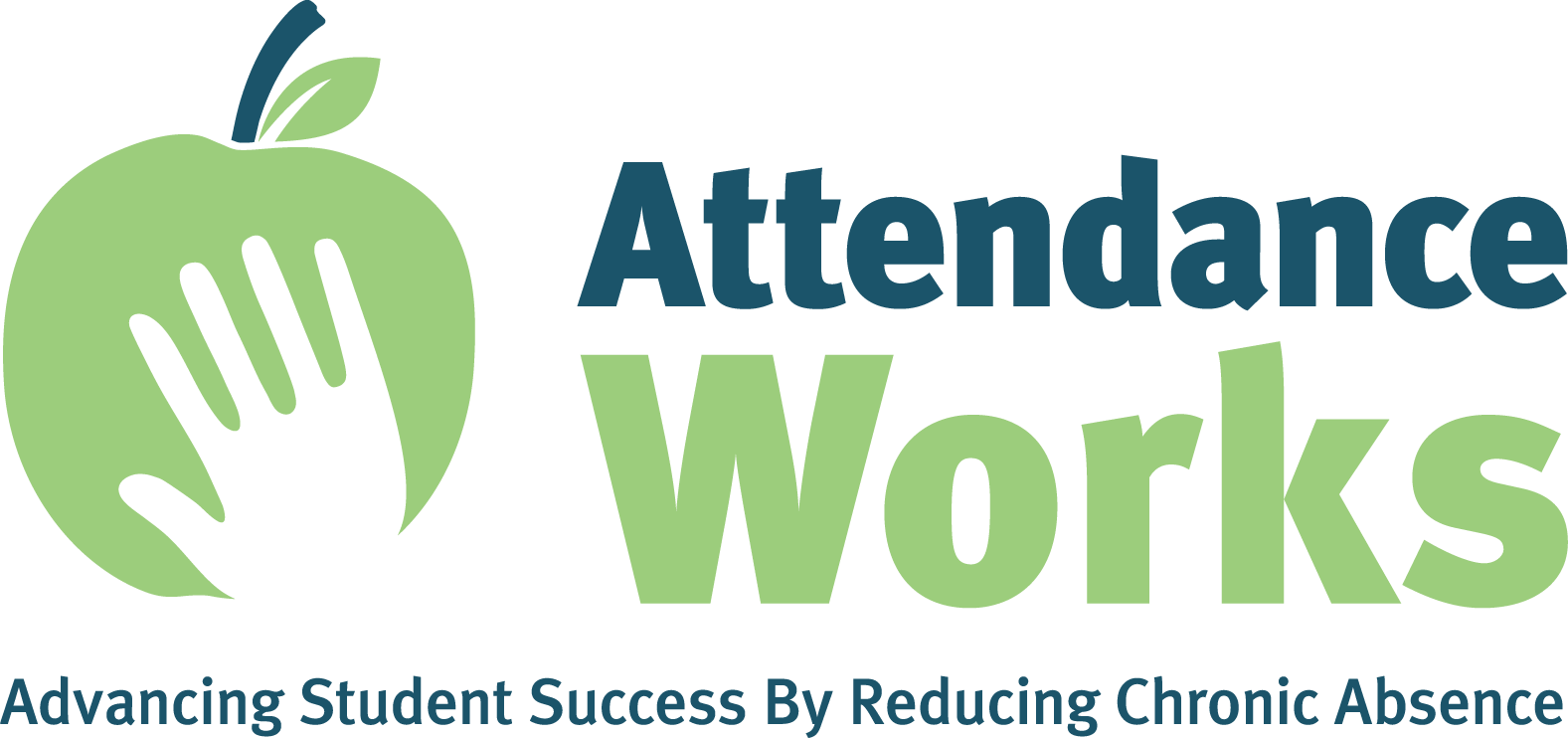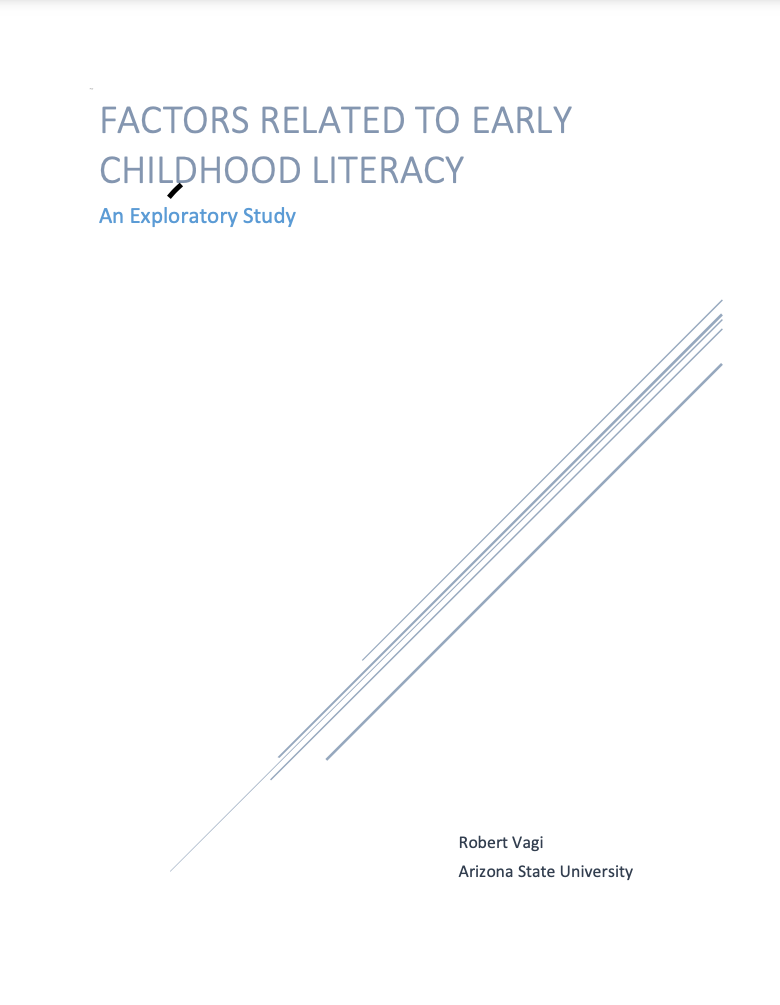
Research shows that school attendance is significantly related to student achievement.
-
Overview
-
Evidence-Based Solutions
Too many absences can keep students from reading at grade level by the end of third grade, which is a strong predictor of future academic success. Students who fall behind early are much more likely to drop out of school and much less likely to develop the skills needed for career success.
A student is considered chronically absent when they miss 10% or more of a school’s calendar year for any reason, excused or unexcused. That’s about 18 days in a typical school year, or just two days a month.
Data from the Arizona Department of Education shows a dramatic, post-pandemic spike in the rate of chronic absence in Arizona’s public schools:
- 32% of Arizona’s students in Grades 1-8 were identified as chronically absent in 2022, up from 13% in 2019.
- Chronic absence rates were even higher among economically disadvantaged students and Native American students.

These statistics are alarming, but chronic absence is a problem we can solve. There are effective, inexpensive strategies to tackle chronic absence that involve schools, communities and families working together.
Students miss school for many different reasons. Challenges may include the lack of consistent housing or transportation, which is a common barrier in rural communities. Family circumstances, illness, or trauma can be involved. Some students may be struggling or disengaged, with no meaningful relationships to adults in the school. Every circumstance is different and often complex.
“Chronic absence is different from truancy, which only counts unexcused absences. Effective approaches to chronic absence cultivate student and family engagement, so that families and students are not problems to be solved but are active in designing the solutions.”
Hedy Chang, Attendance Works
The good news is that preventing absences also produces increases in early literacy outcomes. Data analysis showed that a 1% increase in school-level attendance rate was associated with a 1.5% increase in students passing Arizona’s third grade reading assessment.
Read On Arizona has convened a statewide chronic absence task force to explore the problem and identify effective, proactive strategies to reduce rates of chronic absence in our state. Leaders from the Governor’s office, school districts, state agencies, community partners, legislative staff, and education stakeholders are reviewing data, conferring with national experts from Attendance Works, and will develop recommendations and resources focused on prevention and re-engaging students and families.
Resources

Attendance Works
Attendance Works offers extensive information on chronic absence, policies, and research.
Visit Website
MapLIT
Read On Arizona’s data mapping tool includes chronic absence data by county, district, school, and more.
Learn MoreMissing Too Much School
This research brief published by Helios Education Foundation and WestED highlighted trends in K-8 chronic absenteeism in Arizona during the pandemic.
Visit Website
Factors Related to Early Childhood Literacy
This research study initiated by Read On Arizona showed that two independent measures of student attendance were predictive of school-level reading achievement.
Download